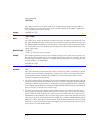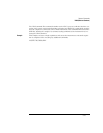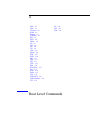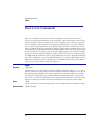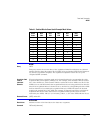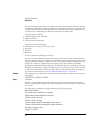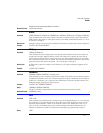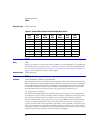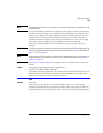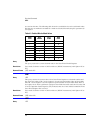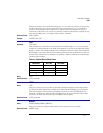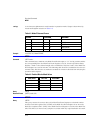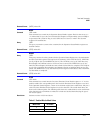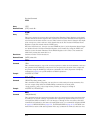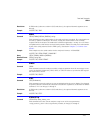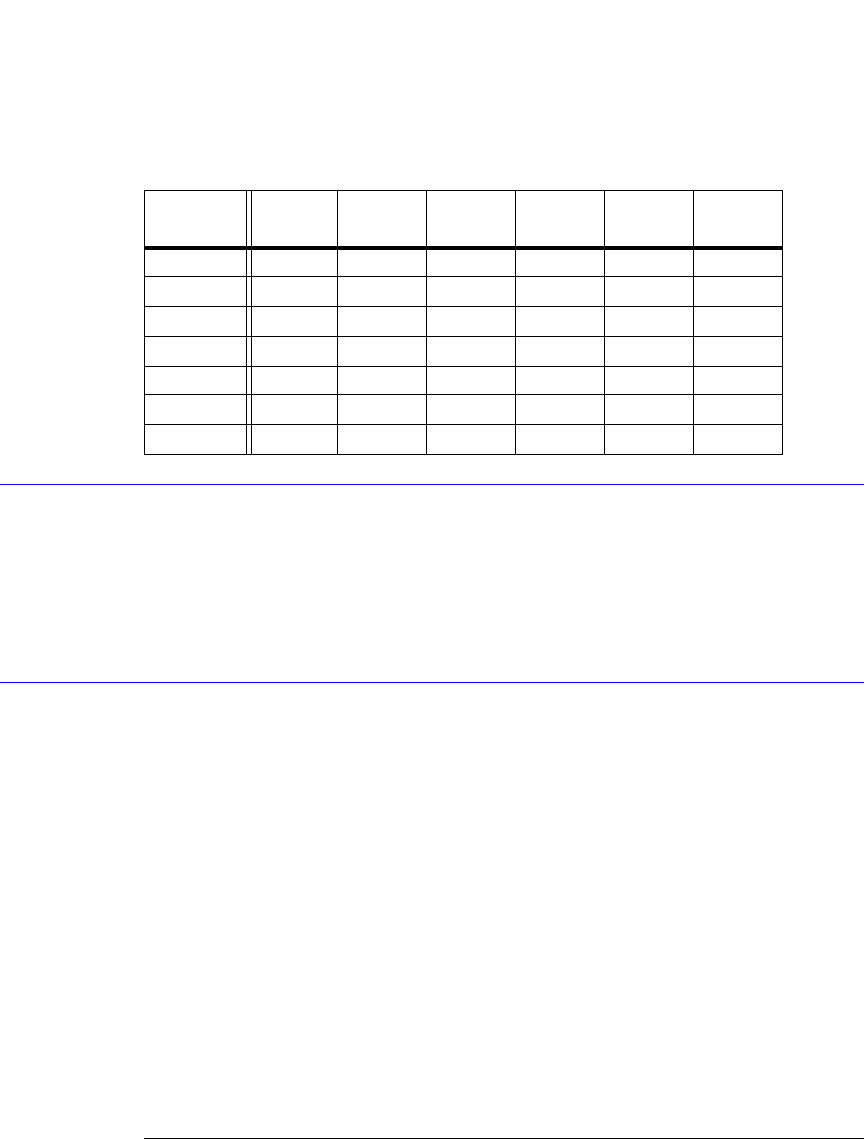
4-6
Root Level Commands
CRER?
Returned Format [:CREE] <mask><NL>
CRER?
Query :CRER?
This query returns the current value of the Clock Recovery Event Register as a decimal num-
ber and also clears the register. Refer to “SPResent?” on page 9-9 for more detailed informa-
tion on receiver one and receiver two. Refer to “Clock Recovery Event Register (CRER)” on
page 1-20 for a definition of each bit in the register.
Returned Format [:CRER] <value><NL>
DIGitize
Command :DIGitize [CHANnel<N> | FUNCtion<N> | RESPonse<N>]
This command invokes a special mode of data acquisition that is more efficient than using the
RUN command when using averaging in the Oscilloscope mode. With the faster computations
of the Agilent 86100B, the DIGitize command is no longer significantly faster than the RUN
and RUNTil commands. In Jitter mode, the DIGitize command does not use any arguments,
and the desired channel or function must be set up before this command is sent.
<N> is an integer, 1 through 4.
The DIGitize command initializes the selected channels or functions, then it acquires them
according to the current analyzer settings. When the signal is completely acquired (for exam-
ple, when the specified number of averages have been taken), the analyzer is stopped.
In any instrument mode except Jitter mode, if you use the DIGitize command with channel,
function, or response parameters, only the specified channels, functions, or responses are
acquired. In Jitter mode, do not append any arguments to this command. To speed up acqui-
sition, the waveforms are not displayed and their display state indicates “off.” Subsequent to
the digitize operation, the display of the acquired waveforms may be turned on for viewing, if
desired. Other sources are turned off and their data is invalidated.
Table 4-2. Enabled Bits for Some Useful Example Mask Values
Mask
Value
Bit 5
SPR2
Bit 4
NSPR2
Bit 3
SPR1
Bit 2
NSPR1
Bit 1
LOCK
Bit 0
UNLK
0
1•
2•
4•
8•
16 •
32 •



